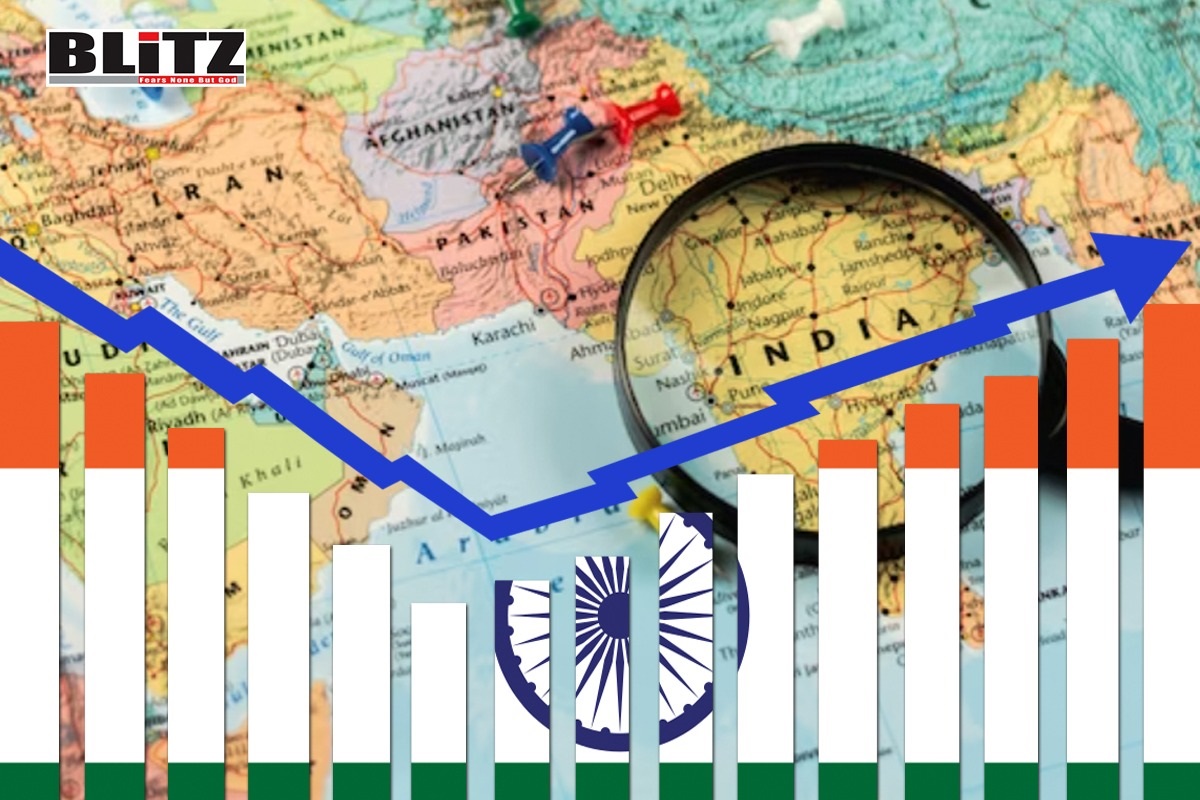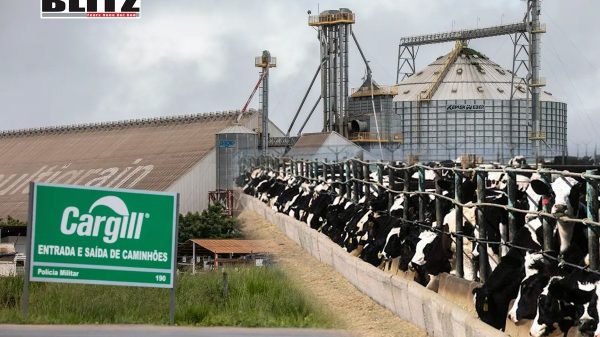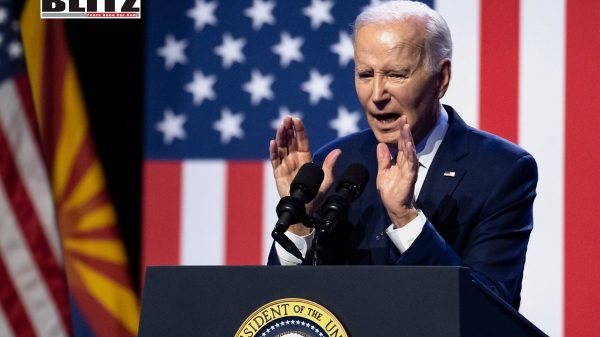How India has emerged into fastest growing economy in the world?
- Update Time : Tuesday, March 5, 2024

India’s emergence as the fastest-growing economy in the world is the result of a combination of factors, ranging from structural reforms to demographic advantages. Let’s delve into some key elements that have contributed to India’s remarkable economic growth:
Demographic dividend
India boasts a young and rapidly growing population, with a large proportion of working-age individuals. This demographic dividend presents a significant opportunity for economic growth, as it fuels consumption, productivity, and innovation. With the right policies and investments in education and skill development, India can harness its demographic advantage to drive economic expansion.
Structural reforms
Over the years, India has implemented a series of structural reforms aimed at liberalizing the economy, enhancing competitiveness, and attracting investment. Key reforms such as the Goods and Services Tax (GST), Insolvency and Bankruptcy Code (IBC), and the introduction of the Direct Benefit Transfer (DBT) system have streamlined processes, reduced bureaucratic hurdles, and fostered a more conducive business environment.
Infrastructure Development: Investment in infrastructure is crucial for driving economic growth and development. India has made significant strides in infrastructure development, with initiatives such as Bharatmala, Sagarmala, and Smart Cities Mission aimed at improving road, port, and urban infrastructure. These investments not only boost economic activity but also enhance connectivity and productivity across the country.
Digital transformation
The proliferation of digital technologies has revolutionized various sectors of the Indian economy, driving efficiency, innovation, and inclusivity. Initiatives such as Digital India have expanded internet connectivity, promoted digital literacy, and facilitated the adoption of digital payments and services. The digital economy has emerged as a key driver of growth, particularly in sectors such as e-commerce, fintech, and IT services.
Focus on manufacturing
India has placed a renewed emphasis on manufacturing as a driver of economic growth and job creation. Initiatives such as Make in India aim to promote domestic manufacturing, attract investment, and enhance the country’s manufacturing capabilities. Additionally, schemes such as Production Linked Incentive (PLI) scheme incentivize manufacturing in key sectors such as electronics, automobiles, and pharmaceuticals.
Global integration
India’s integration into the global economy has played a pivotal role in driving economic growth. The country has pursued trade liberalization policies, entered into trade agreements, and actively participated in global value chains. As a result, India has become an attractive destination for foreign investment and has witnessed significant growth in exports, particularly in sectors such as IT services, pharmaceuticals, and automotive.
Policy Stability and Governance: Policy stability and good governance are essential for fostering investor confidence and sustaining economic growth. India has made efforts to improve governance, enhance transparency, and strengthen institutions. Initiatives such as Ease of Doing Business reforms aim to streamline regulations, reduce red tape, and create a more business-friendly environment.
India’s emergence as the fastest-growing economy in the world is the culmination of concerted efforts to unleash its economic potential, capitalize on demographic advantages, and implement bold reforms. While challenges remain, India’s trajectory towards sustained economic growth remains promising, driven by a dynamic mix of policy initiatives, infrastructure development, and technological innovation.
What is the size of unemployed population in India?
As of January 2022, the size of the unemployed population in India fluctuates over time due to various factors such as economic conditions, demographic changes, and government policies. India’s unemployment rate is typically measured by various agencies and surveys, including the Labour Bureau, the Centre for Monitoring Indian Economy (CMIE), and the National Sample Survey Office (NSSO).
According to the data, India’s unemployment rate has experienced fluctuations in recent years. Before the COVID-19 pandemic, India’s unemployment rate was around 6-7 percent. However, the pandemic significantly impacted the economy, leading to a spike in unemployment rates. During the peak of the pandemic in 2020, the unemployment rate soared to double digits, reaching around 23-24 percent according to some estimates.
Since then, the unemployment rate has gradually improved but remains elevated compared to pre-pandemic levels. As of the most recent data available, the unemployment rate in India was around 7-8 percent.
It’s important to note that measuring unemployment accurately in a country as large and diverse as India can be challenging due to factors such as informal employment, underemployment, and seasonal variations. Additionally, different agencies may use different methodologies and definitions to calculate unemployment, leading to variations in reported figures.
Overall, while the exact size of the unemployed population in India can vary, it remains a significant challenge that policymakers and stakeholders continue to address through various initiatives aimed at promoting job creation, skill development, and economic growth.
What is the size of population in acute poverty in India?
As of January 2022, India has made significant progress in reducing poverty over the years, but a considerable portion of its population still lives in poverty. The term “acute poverty” typically refers to those living below the poverty line or in extreme poverty, often defined as living on less than US$1.90 per day, as per the World Bank’s international poverty line.
According to the World Bank, as of 2021, India’s poverty rate was estimated to be around 9.7 percent, which translates to approximately 134 million people living in extreme poverty. However, it’s important to note that estimates of poverty levels can vary depending on the methodology used and the specific poverty line applied.
India has implemented various poverty alleviation programs and initiatives aimed at reducing poverty and improving the welfare of its citizens. These include schemes such as the Mahatma Gandhi National Rural Employment Guarantee Act (MGNREGA), the National Rural Livelihoods Mission (NRLM), and the Pradhan Mantri Awas Yojana (PMAY), among others. These programs aim to provide employment opportunities, promote rural development, and provide social assistance to vulnerable populations.
Despite progress in poverty reduction, challenges remain, particularly in addressing issues such as income inequality, access to basic services, and vulnerability to economic shocks. Additionally, the COVID-19 pandemic has exacerbated poverty and economic hardship for many vulnerable communities in India, highlighting the importance of continued efforts to address poverty and promote inclusive growth.
Overall, while the exact size of the population in acute poverty in India may vary depending on the definition and measurement used, it remains a significant challenge that requires ongoing attention and concerted efforts from policymakers, civil society, and the international community.
What are the key factors obstructing India’s economic growth?
India’s economic growth is undeniably impressive, but several key factors pose challenges and act as obstacles to its sustained development. Here are some of the most prominent factors hindering India’s economic growth:
Infrastructure deficit
Despite significant progress in recent years, India still faces substantial infrastructure deficits in areas such as transportation, energy, and urban development. Inadequate infrastructure limits productivity, hampers supply chains, and impedes overall economic growth.
Bureaucratic red tape
India’s bureaucratic processes can be complex, time-consuming, and prone to corruption. Excessive regulations, bureaucratic hurdles, and a lack of transparency deter investment, stifle entrepreneurship, and hinder business growth.
Labor market challenges:
India’s labor market is characterized by a large informal sector, rigid labor laws, and skill mismatches. These factors contribute to high unemployment, underemployment, and a lack of decent work opportunities, particularly for the country’s burgeoning youth population.
Income inequality
Despite economic growth, income inequality remains a significant challenge in India. Disparities in income distribution, access to resources, and opportunities exacerbate social tensions, hinder social mobility, and pose risks to long-term economic stability and inclusivity.
Financial sector issues
India’s financial sector faces various challenges, including non-performing assets (NPAs), liquidity constraints, and a lack of access to credit, particularly for small and medium-sized enterprises (SMEs). Strengthening the banking sector, enhancing financial inclusion, and addressing systemic risks are crucial for sustainable economic growth.
Education and skill development
While India has made strides in improving literacy rates and expanding educational access, the quality of education and skill development remains a concern. A skilled workforce is essential for fostering innovation, productivity, and competitiveness in the global economy.
Environmental degradation
Rapid industrialization and urbanization have led to environmental degradation, including air and water pollution, deforestation, and depletion of natural resources. Environmental challenges not only pose risks to public health and well-being but also threaten long-term sustainable development and economic growth.
Geopolitical uncertainties
India faces geopolitical uncertainties and regional tensions that can impact trade, investment, and economic stability. Uncertainties related to border disputes, geopolitical rivalries, and global trade dynamics can create volatility and pose risks to India’s economic growth trajectory.
Healthcare infrastructure
The COVID-19 pandemic has underscored the importance of robust healthcare infrastructure and systems. India faces challenges in healthcare delivery, access to quality healthcare services, and public health preparedness, which can impact economic resilience and human capital development.
Addressing these obstacles requires a multi-faceted approach, including structural reforms, policy interventions, investments in infrastructure and human capital, and efforts to promote inclusive and sustainable development. By addressing these challenges effectively, India can unlock its full economic potential and achieve long-term prosperity for all its citizens.

















Leave a Reply